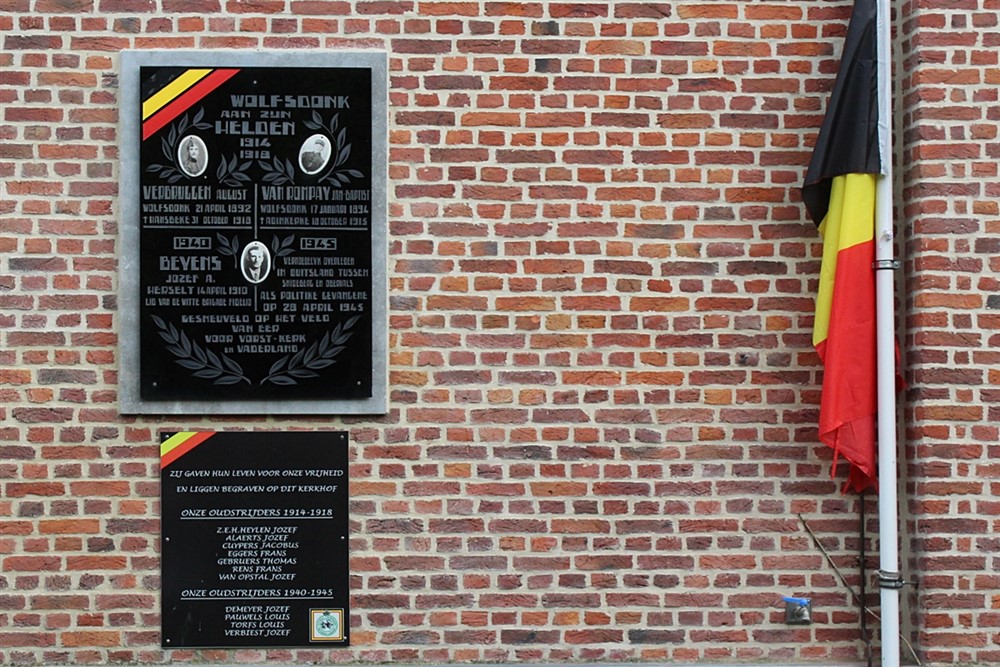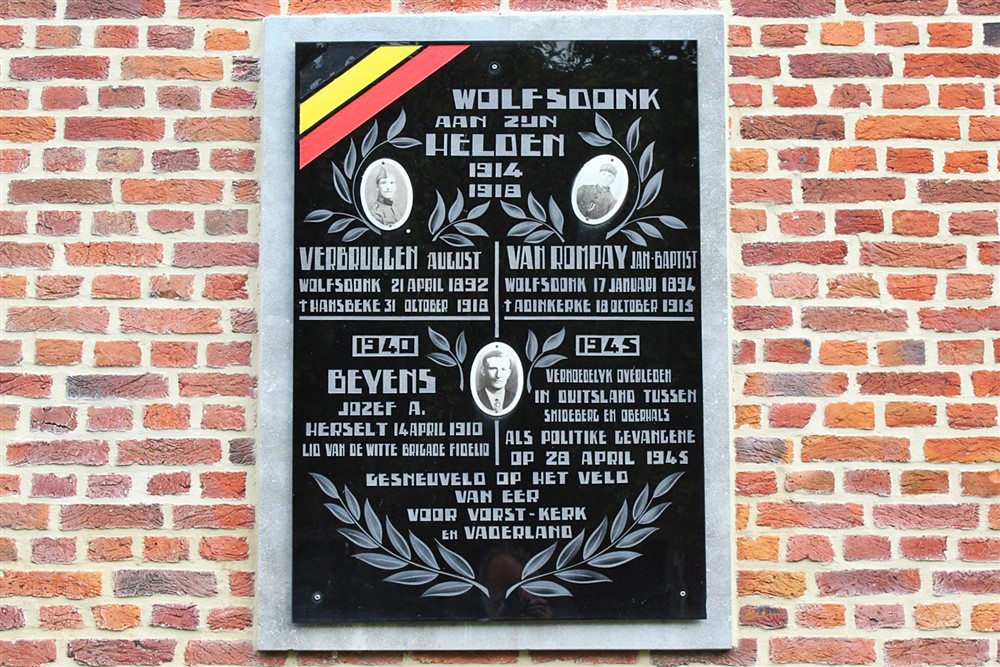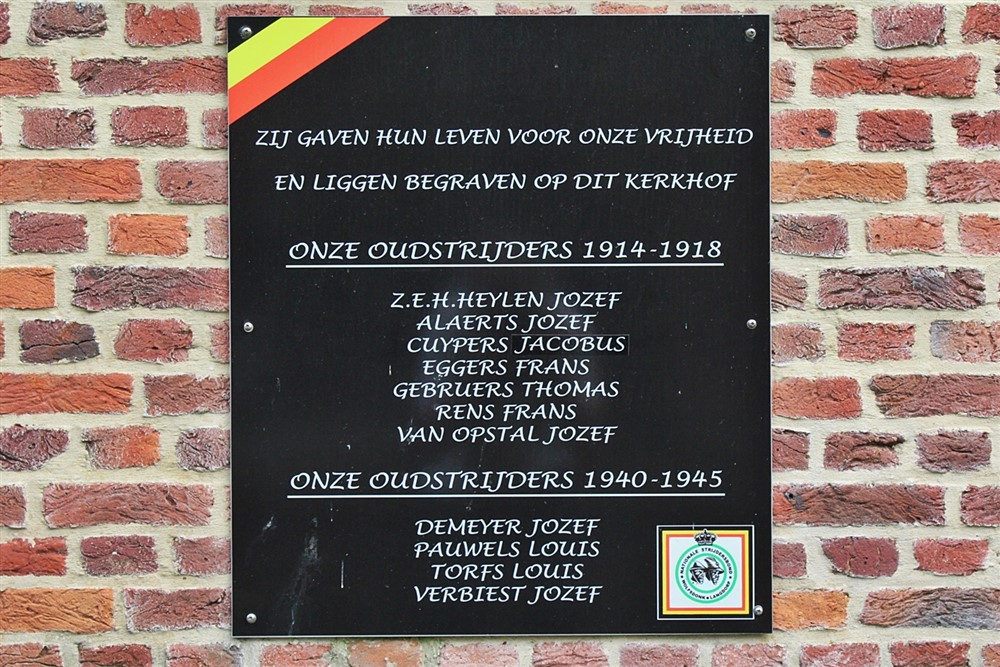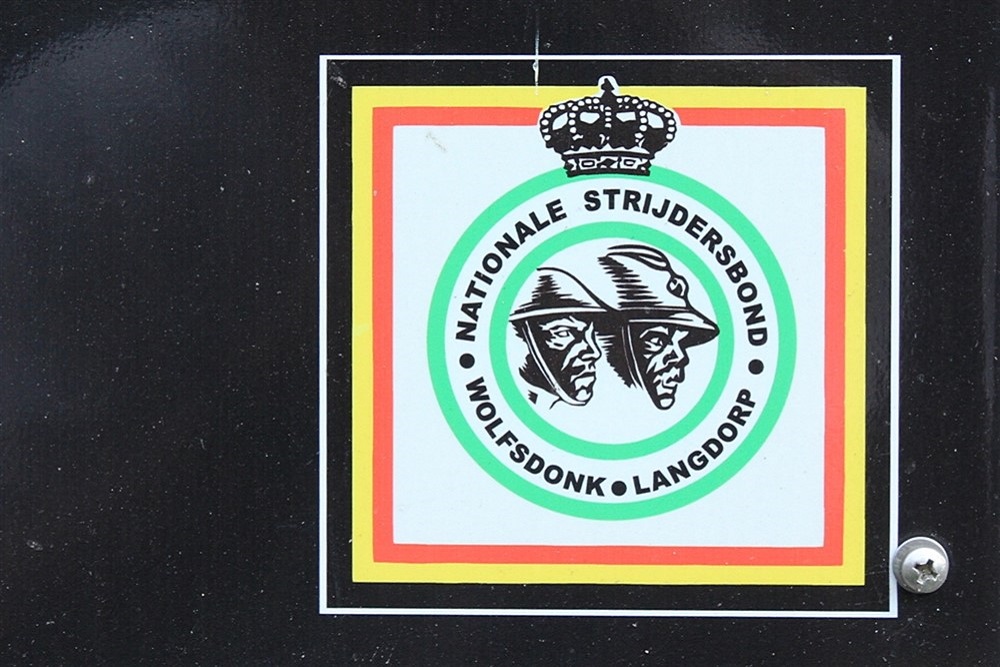Memorial Military War Dead Wolfsdonk
Plaque commemorating the military victims and former combatants of Wolfsdonk (Aarschot) for the First and the Second World War.
The facts
The toll that the villages of Wolfsdonk and Langdorp paid in the First World War seems to be less heavy than for the other villages near Aarschot. This may be because the German troops captured the city of Aarschot from the north via Herselt and from the southeast via Rillaar. When a group of German cavalry moved through the village on August 18, the residents fled to the forests below Wolfsdonk. The horrors in nearby Herselt were heard, but the village was spared.
The two fallen war volunteers mentioned on the memorial plaque are in Belgian military cemeteries and never returned to their village. Jan-Baptist Van Rompay, soldier 2nd class with the hunters on foot, was fatally injured on October 17, 1915 when he was on guard in the forward trench on the Yser Front. The medical report reported a severe fracture of the skull and loss of brain matter. A skull bore could no longer help. The soldier died a few days later and was buried in the military cemetery of Adinkerke.
August Verbruggen served as a soldier 2nd class with the genius. He was killed on October 31, 1918, ten days before the armistice. Originally he was buried in Hansbeke, but when the military cemeteries were reorganized, the body was transferred to the Bruges urban cemetery in 1922.
Before the Second World War we see the name of Jozef Beyens, resistance of the White Brigade and who died in Germany as a political prisoner. Since the body could not be repatriated, a cenotaph was placed on the church wall. It disappeared over time and was replaced in 2015 by a cross with his name.
About the plaque
This marbriet memorial plaque, mounted on bluestone and classically decorated with the Belgian tricolor, was realized in 1964 on the initiative of the local veterans' union of Wolfsdonk. Such unions not only honored the memory, but during the difficult recovery after both wars, they mainly focused on meeting the physical and moral needs of the former fighters, resistance members and their families. Wolfsdonk already had such an association in 1920, founded by pastor Huybreghts, who himself had been chaplain on the Yser Front.
Do you have more information about this location? Inform us!
Source
- Text: Jan Rymenams
- Photos: Jan Rymenams
Nearby
Museum
- Allied Forces Museum Herselt - Herselt
- Stedelijk Museum, Room "War and destruction" Aarschot - Aarschot
Point of interest
- Grote Markt Aarschot - Aarschot
- Glass Window Church Of Our Lady Aarschot - Aarschot
- Peace Carillon Aarschot - Aarschot
Monument
- War Memorial Blauberg - Blauberg (Herselt)
- War Memorial Cemetery Testelt - Testelt (Scherpenheuvel-Zichem)
- Memorial Monument XXIth And XXIIth Jew Transport Langdorp - Langdorp (Aarschot)
Cemetery
- Belgian War Grave Testelt - Testelt (Scherpenheuvel-Zichem)
- Belgian Graves Veterans Testelt - Testelt (Scherpenheuvel-Zichem)
- Belgian Graves Veterans Messelbroek - Messelbroek (Scherpenheuvel-Zichem)








